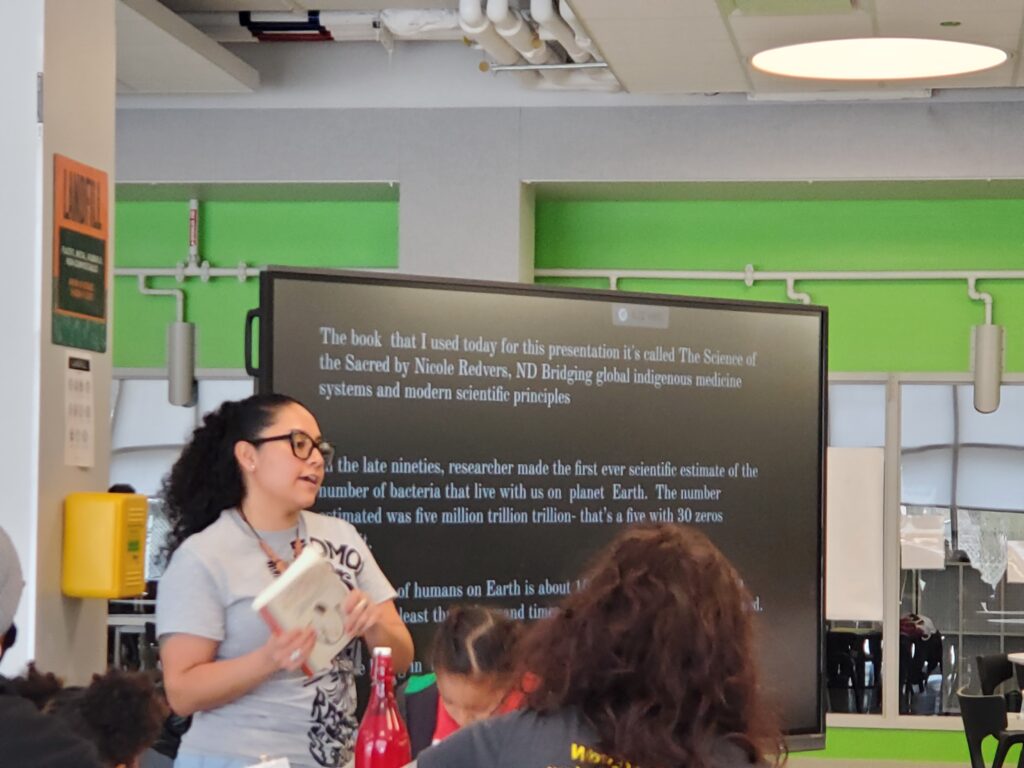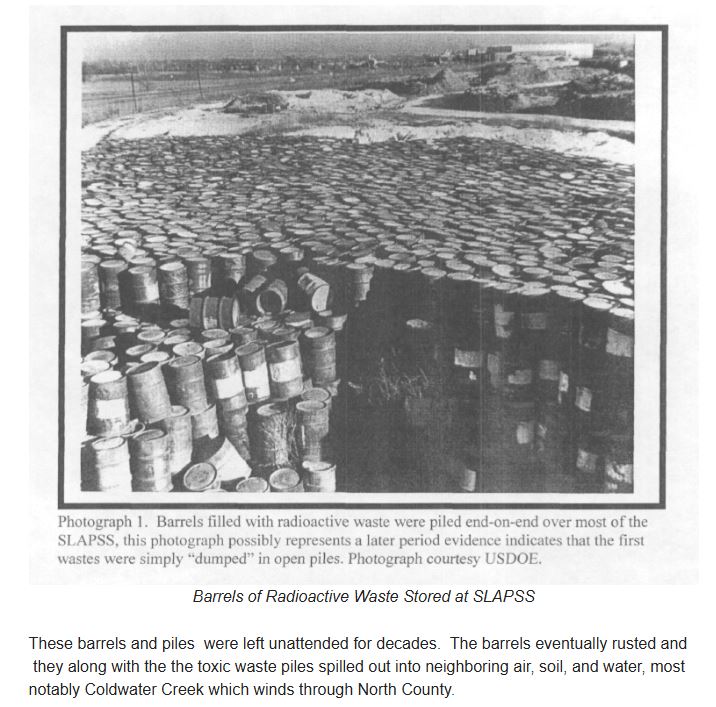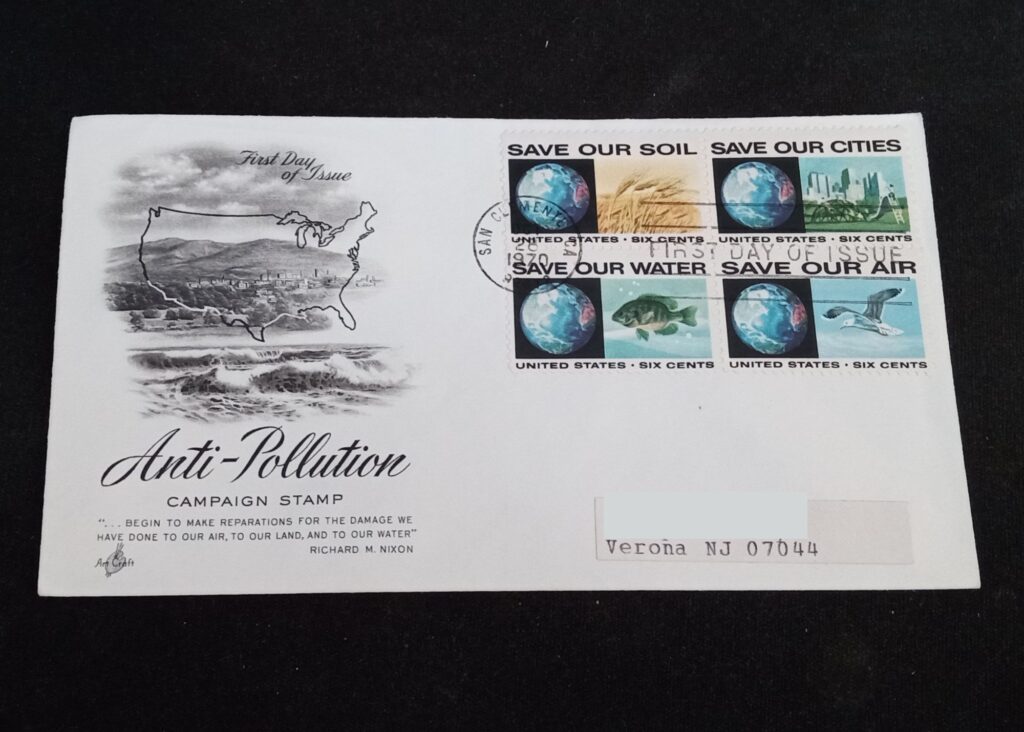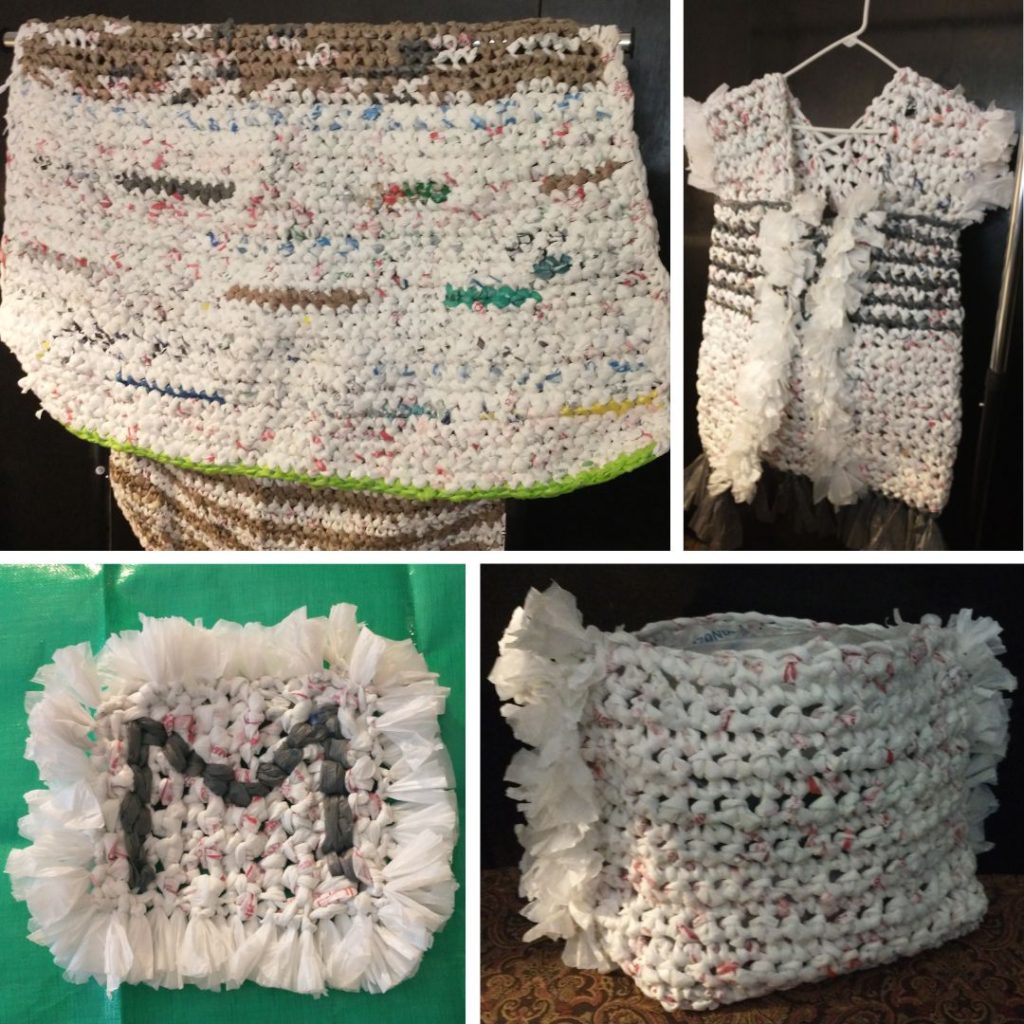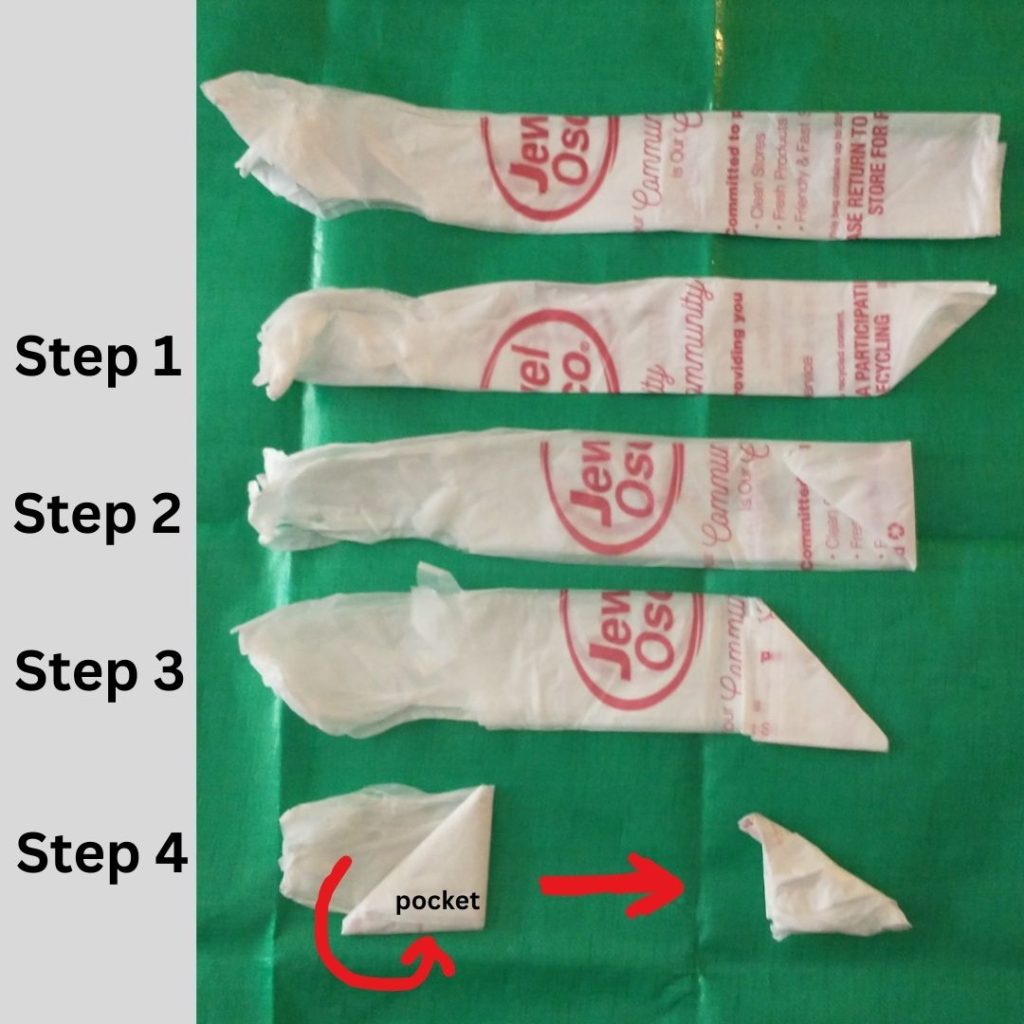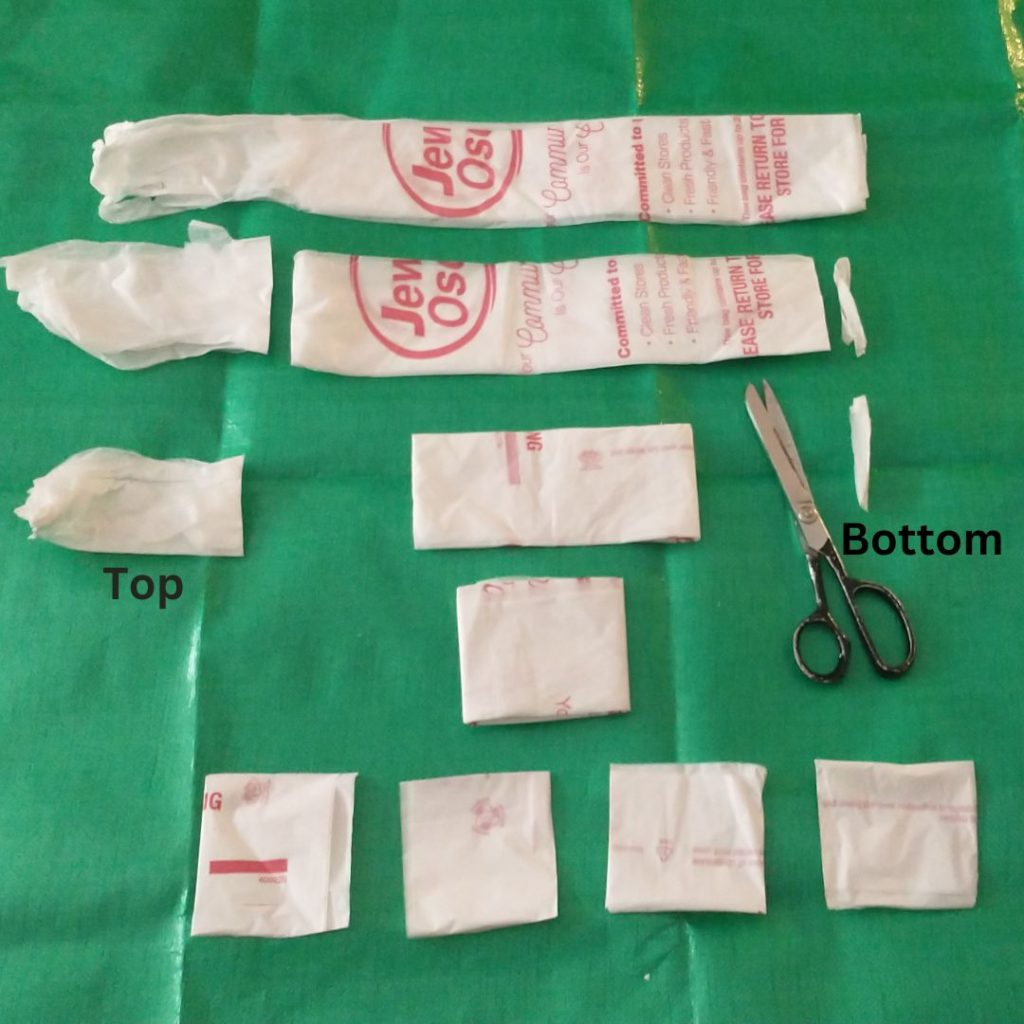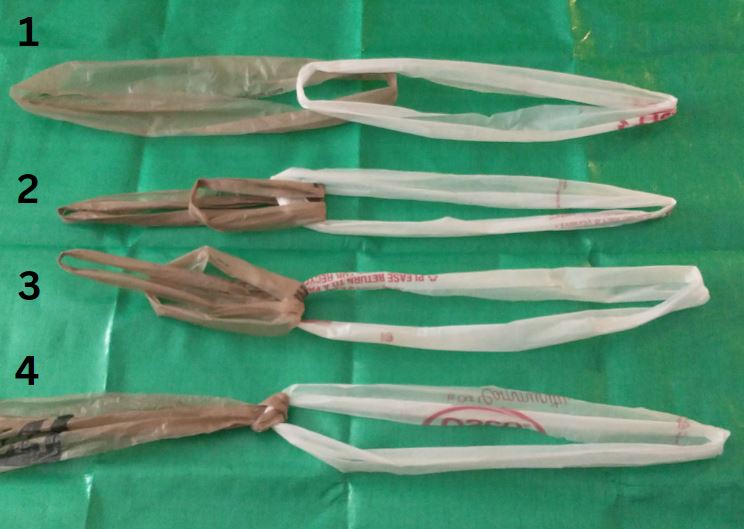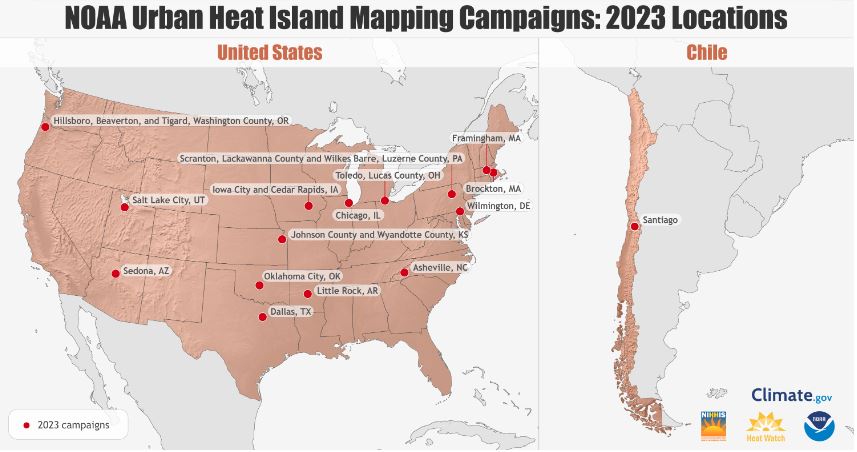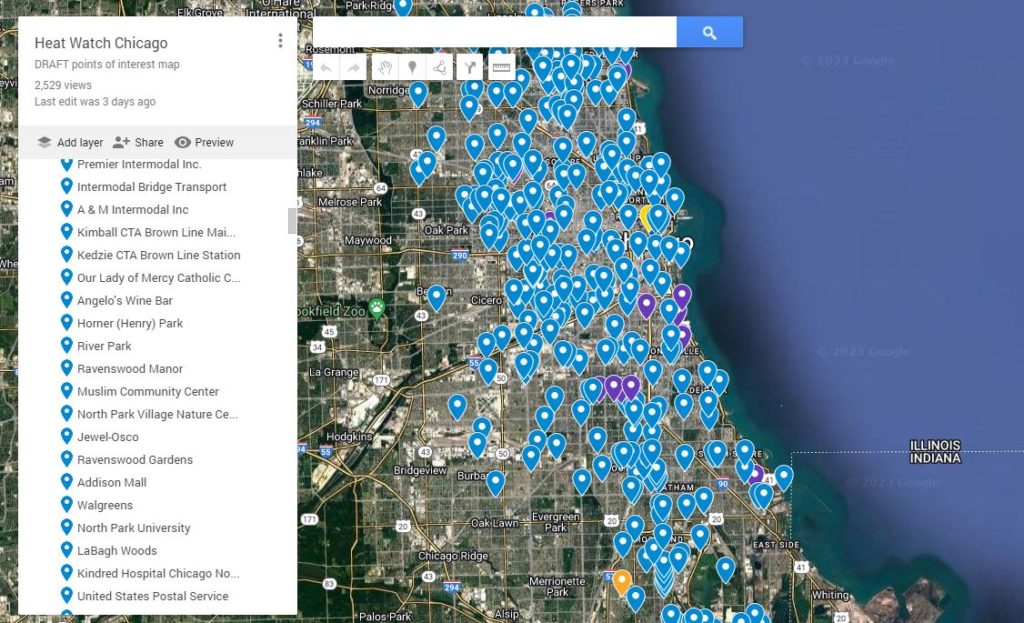From my recent browsing at a flea market, I got an interesting philatelic item. It is the First Day Issue Stamp And Envelope of Anti Pollution Campaign, released in 1970.
There are four stamps attached to the envelope. As described by New York Times, the stamp designs incorporate two segments topped by pleas to “Save Our Soil,” “Save Our Cities,” “Save Our Water” and “Save Our Air.” The left portion of each stamp pictures the world as viewed from outer space. In adjoining panels, the Soil stamp shows wheat bent by the wind. The Cities stamp has children at play and skyscrapers in the background. The Water stamp depicts a fish. The Air stamp shows a bird.
A quote by Richard M. Nixon is printed on the envelope. “… Begin to make reparations for the damage we have done to our air, to our land, and to our water.”
Former President Nixon from the Republican Party was infamous for the Watergate Scandal that led to his resignation. His legacy in environmental policies is not well-known in the US.
From the Nixon Foundation, “President Nixon’s consequential environmental record is surprising to many people. The Nixon administration initiated many of the most important, and enduring, environmental policies in American history including: the signing of the National Environmental Policy Act, the creation of the Environmental Protection Agency, the signing of the Clean Air Act of 1970, the creation of the National Oceanic and Atmospheric Administration, the signing of the Endangered Species Act, the signing of the Marine Mammal Protection Act and the creation of the Legacy of Parks program, which converted more than 80,000 acres of government property to recreational use in 642 new parks.”
In 2017, Harvard Law School had a discussion on “The Remarkable Evolution of American Environmental Law from Nixon to Trump and Beyond.”
They discussed the fact that the Environmental Protection Agency (EPA) was initially created, and later championed, by Republican administrations. One of the panelists, James Barnes, a chief of staff to the first EPA administrator, noted that the environmental movement barely existed before 1970, the year of the first Earth Day.
The impetus was a string of environmental disasters, i.e., The Cuyahoga River catching fire, the Santa Barbara oil spill, the near-death of Lake Erie, and the near-extinction of the bald eagle. People were also beginning to notice that their favorite fishing hole was no longer producing fish. There were vast outpourings of public concern, an estimated 20 million people at sit-ins and protests. In 1969 Congress passed an environmental act that Nixon signed. He proclaimed that the 1970s will be the decade of the environment.
Unfortunately, environmental issues turned into divided political issues for Republicans and Democrats. Democratic opponents ridiculed George H.W. Bush for being serious about his aim to be “the environmental President.” Richard J. Lazarus from Harvard Law School and author of “The Making of Environmental Law” suggested that, neither Nixon nor Bush got much political return for their pro-environment stance, leading them to rethink their principles.
As President Trump returns to the White House, environmental issues continue being politicized and sharply dividing the American people. In 2012, Trump tweeted, “The concept of global warming was created by and for the Chinese in order to make U.S. manufacturing non-competitive. In his 2025 Executive Order, Trump stated that, “Climate extremism has exploded inflation and overburdened businesses with regulation.” It is clear that Trump is prioritizing American businesses and manufactures over environmental issues championed by Republicans in the 70s.
Learning history is important to understand the political issues, like the historical shift of the ruling parties in pursuing the American ideal values, i.e., taking care of our environment and using science and technology to build a better civilization on Earth.
Learning history from stamps is one of the reasons I love Philately or stamp collecting. It was a popular hobby in the 80s. I sometimes exchanged and sold my extra stamps to my classmates to grow my collection. Stamps were the window to the world for me who grew up in Indonesia before the era of the Internet and email. To this day, I still enjoy learning history, nature, culture, and science from stamps.
